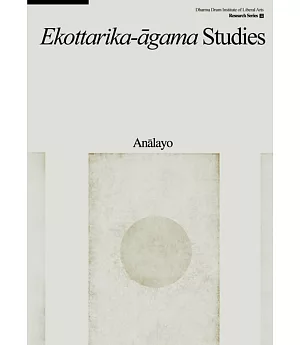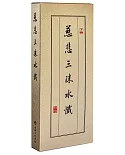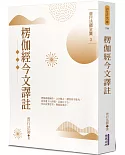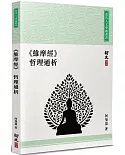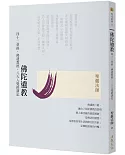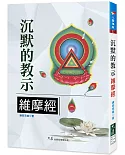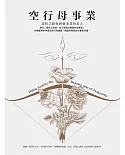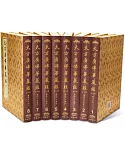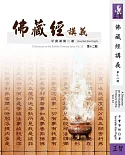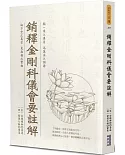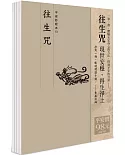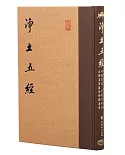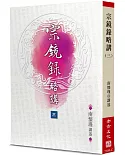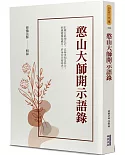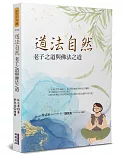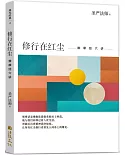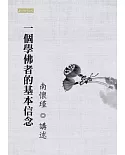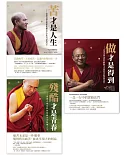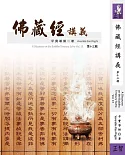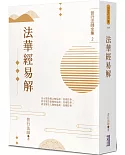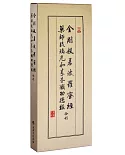內容簡介
The present book collects research papers by Bhikkhu Anālayo with translations of Ekottarika-āgama discourses and comparative studies of their Pāli parallels, together with three
appendices on the terms Mahāyāna, Hīnayāna, and Theravāda. Several papers study aspects of the Ekottarika-āgama as a collection distinct from other Nikāya and Āgama
collections. In addition, topics taken up in the course of this book are seclusion, the lion's roar, the wheel-turning king, Paccekabuddhas, and the four noble truths, as well as depictions of
accomplished nuns and their significance.
作者介紹
作者簡介
Anālayo
Bhikkhu Anālayo was born in Germany in 1962 and ordained in Sri Lanka in 1995. He completed a Ph.D. thesis at the University of Peradeniya (Sri Lanka) in 2000 and a habilitation thesis at the University of Marburg (Germany) in 2007. At present he is a professor at the University of Hamburg, Numata Center for Buddhist Studies (Germany).
Anālayo
Bhikkhu Anālayo was born in Germany in 1962 and ordained in Sri Lanka in 1995. He completed a Ph.D. thesis at the University of Peradeniya (Sri Lanka) in 2000 and a habilitation thesis at the University of Marburg (Germany) in 2007. At present he is a professor at the University of Hamburg, Numata Center for Buddhist Studies (Germany).
目錄
List of Tables and Plates vii
DILA Series ix
Foreword xi
Introduction 1
Bhayabherava-sutta (MN 4) 9
Cūḷasīhanāda-sutta (MN 11) 31
Kakacūpama-sutta (MN 21) 51
Bhaddāli-sutta (MN 65) 87
Makhādeva-sutta (MN 83) Part 1 113
Makhādeva-sutta (MN 83) Part 2 141
Makhādeva-sutta (MN 83) Part 3 165
Isigili-sutta (MN 116) 215
Saccavibhaṅga-sutta (MN 141) 239
Jiṇṇa-sutta (SN 16.5) 249
Dhammacakkappavattana-sutta (SN 56.11) 267
Etadagga-vagga (AN 1.14.5) 301
Sela-sutta (Sn 3.7) 325
Subhā-therīgāthā (Thī 396) 345
Gotamī-apadāna (Ap 17) 359
Bhaddā-apadāna (Ap 27 & 28) 381
Padīpadāna-jātaka (Paññāsa-jā 4.5) 413
Appendix (1): Mahāyāna 443
Appendix (2): Hīnayāna 473
Appendix (3): Theravāda 497
Abbreviations 523
References 525
Index 625
Plates 649
List of Tables
Table 1: Translated Ekottarika-āgama Discourses 5
Table 2: The Three Turnings 298
Table 3: Bodhisattva and Yāna References in T 125 470
List of Plates
Plate 1: Lion Capital 649
Plate 2: The cakravartin Māndhātṛ 650
Plate 3: A Paccekabuddha 651
Plate 4: Turning the Wheel of Dharma (1) 652
Plate 5: Turning the Wheel of Dharma (2) 653
DILA Series ix
Foreword xi
Introduction 1
Bhayabherava-sutta (MN 4) 9
Cūḷasīhanāda-sutta (MN 11) 31
Kakacūpama-sutta (MN 21) 51
Bhaddāli-sutta (MN 65) 87
Makhādeva-sutta (MN 83) Part 1 113
Makhādeva-sutta (MN 83) Part 2 141
Makhādeva-sutta (MN 83) Part 3 165
Isigili-sutta (MN 116) 215
Saccavibhaṅga-sutta (MN 141) 239
Jiṇṇa-sutta (SN 16.5) 249
Dhammacakkappavattana-sutta (SN 56.11) 267
Etadagga-vagga (AN 1.14.5) 301
Sela-sutta (Sn 3.7) 325
Subhā-therīgāthā (Thī 396) 345
Gotamī-apadāna (Ap 17) 359
Bhaddā-apadāna (Ap 27 & 28) 381
Padīpadāna-jātaka (Paññāsa-jā 4.5) 413
Appendix (1): Mahāyāna 443
Appendix (2): Hīnayāna 473
Appendix (3): Theravāda 497
Abbreviations 523
References 525
Index 625
Plates 649
List of Tables
Table 1: Translated Ekottarika-āgama Discourses 5
Table 2: The Three Turnings 298
Table 3: Bodhisattva and Yāna References in T 125 470
List of Plates
Plate 1: Lion Capital 649
Plate 2: The cakravartin Māndhātṛ 650
Plate 3: A Paccekabuddha 651
Plate 4: Turning the Wheel of Dharma (1) 652
Plate 5: Turning the Wheel of Dharma (2) 653
序
DILA Series
Dharma Drum Institute of Liberal Arts (DILA) Series
In 1994, Master Sheng Yen (1931-2009), the founder of Dharma Drum Buddhist College, began publishing the series of the Chung-Hwa Institute of Buddhist Studies. The purposes of publishing this series were to provide a venue for academic research in Buddhist studies supported by scholarships from the Chung-Hwa Institute of Buddhist Studies, to encourage top-quality Buddhist research, and to cultivate an interest in Buddhist research among the readership of the series. Moreover, by encouraging cooperation with international research institutions, Master Sheng Yen hoped to foster the academic study of Buddhism in Taiwan.
In keeping with this vision, in order to promote different aspects of exchange in academic research, we at Dharma Drum Buddhist College began to publish three educational series in 2007:
- Dharma Drum Buddhist College Research Series (DDBCRS)
- Dharma Drum Buddhist College Translation Series (DDBCTS)
- Dharma Drum Buddhist College Special Series (DDBCSS)
In July 2014, the Taiwanese Ministry of Education deliberated on the merging of the Dharma Drum College of Humanities and Social Sciences and the Dharma Drum Buddhist College into the newly formed Dharma Drum Institute of Liberal Arts (DILA).
The new DILA incarnations of the former three series are now:
- Dharma Drum Institute of Liberal Arts Research Series (DILA-RS)
- Dharma Drum Institute of Liberal Arts Translation Series (DILA-TS)
- Dharma Drum Institute of Liberal Arts Special Series (DILA-SS)
Among our goals is the extensive development of digital publishing and information to adapt to the interactive and hyperconnective environment of the Web 2.0 age. This will allow research outcomes to be quickly shared and evaluated through the participation of individual users, through such media as blogs, shared tagging, wikis, social networks and so on. Our hope is to work towards developing an open environment for academic studies (perhaps called Science 2.0) on digital humanities that will be more collaborative and efficient than traditional academic studies. In this way, the Dharma Drum Institute of Liberal Arts will continue to help foster the availability of digital resources for Buddhist studies, the humanities, and the social sciences.
Bhiksu Huimin
Foreword
Debates about the school affiliation of the Ekottarika-agama, doubts about the identity of the translator, criticisms of the quality and consistency of the translation - these and other problems have placed the Ekottarika in an insecure position vis-a-vis the other Agamas translated into Chinese. Apparent "Mahayana influences" or "interpolations" have led to uncertainties about the status of the extant Ekottarika-agama (Taisho 125) as the genuine Agama of any of the early Indian schools.
These and many other questions about the Ekottarika-agama are adroitly addressed by Bhikkhu Analayo in the essays brought together in this volume. The author draws on original texts - not only in Chinese but also in Sanskrit, Tibetan, and Pali - side by side with current research to present balanced and original assessments that enable us to step beyond the impasses of earlier ideas.Three appendices carefully examine the troubled terms Mahayana, Hinayana, and Theravada, opening fresh perspectives. An enhanced understanding of the role of these terms in the development of Buddhist thought and practice allows a clearer picture of the "Mahayana elements" of the Ekottarika-agama to emerge.
Each essay in this collection is structured around a translation or translations of texts from the Ekottarika-agama, comparing these discourses with their counterparts in Pali. The translations add to those from the other Agamas already published by the author, and to the pioneering annotated translations of Ekottarikaagama discourses into French and English by Thich Huyen-Vi and Bhikkhu Pasadika. Together with his ongoing publication of sections of the Chinese Samyukta-agama, they make portions of the Chinese Agamas accessible to modern English-speaking readers for the first time.
The topics include Paccekabuddhas (p. 215ff and 249ff), the "foremost nuns" who were disciples of Sakyamuni (p. 301ff), and the distinctive physical marks that identify a Buddha. The texts chosen for comparison and translation are drawn not only from the four main Pali Nikayas, but also from other collections like the Therigatha, the Apadana, and the Pannasa-jataka-a florilegium that itself demonstrates Buddhism's intricate inter-textuality.
Analayo's researches clarify those of his predecessors. His examination of the problem of the use of the adjective "noble" for the four truths lends support to the previous suggestions of K.R. Norman and others (p. 239ff). Like those undertaken from the time of Etienne Lamotte (1903-1983), if not earlier, his essays reveal that the very idea of a "counterpart" or "parallel" can be problematic, and they call for flexibility in comparative research. In the case of the Ekottarika-agama, Bhikkhu Analayo discusses instances in which passages or partial texts from different sources have been merged to create new texts. He identifies this process as "discourse merger", and concludes that in a few cases such mergers would have taken place in the written medium, presumably in China, after the Indic original had reached China by oral transmission.
Bhikkhu Analayo is a leading figure in a new wave of research into and translation of the early Buddhist textual traditions, in particular the Chinese Agamas, in relation to the Pali Nikayas. His broad sweep is characterized by a lack of dogmatism and a remarkable attention to detail; it covers not only the "primary Agamas" but also the "separate translations" which are too often neglected.
Analayo's meticulous studies fill in the gaps to give a broader picture of the evolution of early Buddhist thought that provides a surer basis for deeper understandings. They demonstrate that the practice of comparing available sources without pride or preju dice is the most appropriate methodology for Buddhist studies, and I hope that this methodology will become the rule.
The excursions into the Ekottarika-agama presented in this volume bring this Agama out of the cold and advance our understanding not only of the Agama traditions but of the Pali and other Buddhist scriptures. These fascinating essays plumb the breadth and the depth of the Buddhadharma to breathe new life into the field of Buddhist studies.
Peter Skilling
Nandapuri
28 October, 2015
Dharma Drum Institute of Liberal Arts (DILA) Series
In 1994, Master Sheng Yen (1931-2009), the founder of Dharma Drum Buddhist College, began publishing the series of the Chung-Hwa Institute of Buddhist Studies. The purposes of publishing this series were to provide a venue for academic research in Buddhist studies supported by scholarships from the Chung-Hwa Institute of Buddhist Studies, to encourage top-quality Buddhist research, and to cultivate an interest in Buddhist research among the readership of the series. Moreover, by encouraging cooperation with international research institutions, Master Sheng Yen hoped to foster the academic study of Buddhism in Taiwan.
In keeping with this vision, in order to promote different aspects of exchange in academic research, we at Dharma Drum Buddhist College began to publish three educational series in 2007:
- Dharma Drum Buddhist College Research Series (DDBCRS)
- Dharma Drum Buddhist College Translation Series (DDBCTS)
- Dharma Drum Buddhist College Special Series (DDBCSS)
In July 2014, the Taiwanese Ministry of Education deliberated on the merging of the Dharma Drum College of Humanities and Social Sciences and the Dharma Drum Buddhist College into the newly formed Dharma Drum Institute of Liberal Arts (DILA).
The new DILA incarnations of the former three series are now:
- Dharma Drum Institute of Liberal Arts Research Series (DILA-RS)
- Dharma Drum Institute of Liberal Arts Translation Series (DILA-TS)
- Dharma Drum Institute of Liberal Arts Special Series (DILA-SS)
Among our goals is the extensive development of digital publishing and information to adapt to the interactive and hyperconnective environment of the Web 2.0 age. This will allow research outcomes to be quickly shared and evaluated through the participation of individual users, through such media as blogs, shared tagging, wikis, social networks and so on. Our hope is to work towards developing an open environment for academic studies (perhaps called Science 2.0) on digital humanities that will be more collaborative and efficient than traditional academic studies. In this way, the Dharma Drum Institute of Liberal Arts will continue to help foster the availability of digital resources for Buddhist studies, the humanities, and the social sciences.
Bhiksu Huimin
President, Dharma Drum Institute of Liberal Arts
15 August, 2014
15 August, 2014
Foreword
Debates about the school affiliation of the Ekottarika-agama, doubts about the identity of the translator, criticisms of the quality and consistency of the translation - these and other problems have placed the Ekottarika in an insecure position vis-a-vis the other Agamas translated into Chinese. Apparent "Mahayana influences" or "interpolations" have led to uncertainties about the status of the extant Ekottarika-agama (Taisho 125) as the genuine Agama of any of the early Indian schools.
These and many other questions about the Ekottarika-agama are adroitly addressed by Bhikkhu Analayo in the essays brought together in this volume. The author draws on original texts - not only in Chinese but also in Sanskrit, Tibetan, and Pali - side by side with current research to present balanced and original assessments that enable us to step beyond the impasses of earlier ideas.Three appendices carefully examine the troubled terms Mahayana, Hinayana, and Theravada, opening fresh perspectives. An enhanced understanding of the role of these terms in the development of Buddhist thought and practice allows a clearer picture of the "Mahayana elements" of the Ekottarika-agama to emerge.
Each essay in this collection is structured around a translation or translations of texts from the Ekottarika-agama, comparing these discourses with their counterparts in Pali. The translations add to those from the other Agamas already published by the author, and to the pioneering annotated translations of Ekottarikaagama discourses into French and English by Thich Huyen-Vi and Bhikkhu Pasadika. Together with his ongoing publication of sections of the Chinese Samyukta-agama, they make portions of the Chinese Agamas accessible to modern English-speaking readers for the first time.
The topics include Paccekabuddhas (p. 215ff and 249ff), the "foremost nuns" who were disciples of Sakyamuni (p. 301ff), and the distinctive physical marks that identify a Buddha. The texts chosen for comparison and translation are drawn not only from the four main Pali Nikayas, but also from other collections like the Therigatha, the Apadana, and the Pannasa-jataka-a florilegium that itself demonstrates Buddhism's intricate inter-textuality.
Analayo's researches clarify those of his predecessors. His examination of the problem of the use of the adjective "noble" for the four truths lends support to the previous suggestions of K.R. Norman and others (p. 239ff). Like those undertaken from the time of Etienne Lamotte (1903-1983), if not earlier, his essays reveal that the very idea of a "counterpart" or "parallel" can be problematic, and they call for flexibility in comparative research. In the case of the Ekottarika-agama, Bhikkhu Analayo discusses instances in which passages or partial texts from different sources have been merged to create new texts. He identifies this process as "discourse merger", and concludes that in a few cases such mergers would have taken place in the written medium, presumably in China, after the Indic original had reached China by oral transmission.
Bhikkhu Analayo is a leading figure in a new wave of research into and translation of the early Buddhist textual traditions, in particular the Chinese Agamas, in relation to the Pali Nikayas. His broad sweep is characterized by a lack of dogmatism and a remarkable attention to detail; it covers not only the "primary Agamas" but also the "separate translations" which are too often neglected.
Analayo's meticulous studies fill in the gaps to give a broader picture of the evolution of early Buddhist thought that provides a surer basis for deeper understandings. They demonstrate that the practice of comparing available sources without pride or preju dice is the most appropriate methodology for Buddhist studies, and I hope that this methodology will become the rule.
The excursions into the Ekottarika-agama presented in this volume bring this Agama out of the cold and advance our understanding not only of the Agama traditions but of the Pali and other Buddhist scriptures. These fascinating essays plumb the breadth and the depth of the Buddhadharma to breathe new life into the field of Buddhist studies.
Peter Skilling
Nandapuri
28 October, 2015
網路書店
類別
折扣
價格
-
新書4折$270
-
新書79折$537
-
新書9折$612
-
新書9折$612
-
新書9折$612

